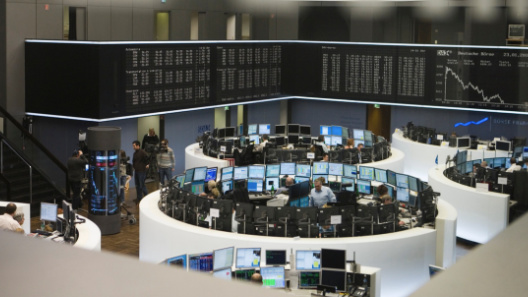What is green cloud?
Tech firms can do their bit to support our march to a zero carbon lifestyle by cleaning up their cloud


The world is running out of fossil fuels and the little it has left can only be accessed at increasingly high costs. Alongside this, countries and organisations are committing to net-zero carbon targets in a bid to offset fossil fuel use.
A large reason for the net-zero carbon pledges is consumer pressure, with the general public far more aware of their own impact on the environment than ever before. This has seen the rise in certain lifestyle changes, such as electric cars or solar panels added to homes, to reduce carbon footprints.
These green-friendly consumers are looking to work and do business with like-minded companies and tech firms can speed up their own pace towards zero carbon emissions with green cloud technologies.
The complexities of green cloud
The colour green has become synonymous with environmentally friendly things and in the context of cloud computing, it's about running data centres with low-carbon output. However, there are more components in the equation than just the power being used to keep a facility operational. The materials used to make the building can also be sourced and produced in ways that don't damage the environment, and that even includes the maintaining of the structure, the whole lifecycle matters.
Even looking at just energy consumption paints a complex picture; renewables are key sources of energy, but other factors, such as how energy efficient a data centre is, or how it distributes energy around the building are also key considerations.
All of this means that understanding how green a green cloud provider is can be complex. Subhankar Pal, assistant vice president of technology and innovation at Capgemini company Altran, tells IT Pro: “Firms can discover their green-ness by establishing a way to evaluate green KPIs during tests and in production. Green KPIs will be derived from metrics like energy efficiency, cooling efficiency, computing infrastructure performance, thermal and air management metrics.”
Prioritising sustainability matters
Consumers are increasingly adopting sustainability models in their everyday life, and are often prepared to pay more for items that meet environmental credentials. The principles that lead people to look for green energy providers, reduced and recyclable packing in purchased goods, and ethically sourced clothing are the same principles that drive them away from companies that lack green credentials. Firms that add green cloud into their mix stand to gain in reputation, regardless of whether their clients are consumers or other businesses.
Get the ITPro daily newsletter
Sign up today and you will receive a free copy of our Future Focus 2025 report - the leading guidance on AI, cybersecurity and other IT challenges as per 700+ senior executives
As Emma Roscow, Intelligent cloud infrastructure lead for Accenture UKI explains: “Business strategy is increasingly focused on sustainability, with many companies making commitments to reduce their carbon footprint. In fact, 99% of CEOs from large companies now agree that sustainability issues are important to the future success of their businesses.”
It’s not just about good PR, though – the real environmental gains matter too. Roscow adds: “Accenture recently found that public cloud migrations could reduce global carbon emissions by 59 million tons of CO2 per year, the equivalent to taking 22 million cars off the road.”
Lead the way and keep a clear head
RELATED RESOURCE

Work from anywhere: Empowering the future of work
Employees want to work from anywhere, IT needs to be able to support this shift
Given the depletion of fossil fuels and push towards renewables, the move to green cloud is ultimately inevitable. For Pal, the time is right to make the move. “The reason to do this now is because some firms are already experiencing higher cost pressures, and they could be more cost implications in the long run. There could be stricter government regulations, penalties, and higher operational costs for managing non-green data centres,” he says.
But the move should be made with a clear head. Nick Mcquire, vice president, enterprise research at CCS Insight tells IT Pro: “We are seeing the cloud providers posturing over ‘my cloud is cleaner than your cloud’ as they commit on the one hand, to massive infrastructure build-outs to sustain demand and differentiate their platforms, and the ability for this infrastructure to be friendly on the planet on the other.” He advises, “customers should push their cloud providers hard on providing energy data around where they place their cloud workloads and for innovation in areas that can cut their energy emissions.”
Roscow highlights some additional factors to be taken into account including, within any firm, “the current hardware’s lifecycle, approach to application development, their sustainable business models and processes, and how they use the cloud to create circular operations”.
There is no easy, off the shelf, method of deciding when and how to make the move to green cloud. Each firm will need to do its own research on both cloud services and its wider use of IT – and that research might be much more in-depth than you think. Roscow puts this plainly – if surprisingly – when she reveals that “Accenture Labs’ research found that even the choice of coding language can impact energy consumption by as much as fifty times, depending on the programming technique”.
Despite these twists and turns, there is no doubt the move to green cloud is coming for tech firms as for all others. Making the move sooner rather than later might be better financially and reputationally – as well as for the planet.

Sandra Vogel is a freelance journalist with decades of experience in long-form and explainer content, research papers, case studies, white papers, blogs, books, and hardware reviews. She has contributed to ZDNet, national newspapers and many of the best known technology web sites.
At ITPro, Sandra has contributed articles on artificial intelligence (AI), measures that can be taken to cope with inflation, the telecoms industry, risk management, and C-suite strategies. In the past, Sandra also contributed handset reviews for ITPro and has written for the brand for more than 13 years in total.
-
 Cleo attack victim list grows as Hertz confirms customer data stolen
Cleo attack victim list grows as Hertz confirms customer data stolenNews Hertz has confirmed it suffered a data breach as a result of the Cleo zero-day vulnerability in late 2024, with the car rental giant warning that customer data was stolen.
By Ross Kelly
-
 Lateral moves in tech: Why leaders should support employee mobility
Lateral moves in tech: Why leaders should support employee mobilityIn-depth Encouraging staff to switch roles can have long-term benefits for skills in the tech sector
By Keri Allan
-
 Three innovative technologies to address UPS challenges at the edge
Three innovative technologies to address UPS challenges at the edgeWhitepaper With increasing focus on edge computing comes added pressure for better uninterruptible power supply (UPS)
By ITPro
-
 Accelerating FinOps & sustainable IT
Accelerating FinOps & sustainable ITWhitepaper With IBM's Turbonomic® Application Resource Management
By ITPro
-
 2022 State of the multi-cloud report
2022 State of the multi-cloud reportWhitepaper What are the biggest multi-cloud motivations for decision-makers, and what are the leading challenges
By ITPro
-
 Green credentials sway cloud provider choice
Green credentials sway cloud provider choiceNews Sustainability a key factor in cloud provider selection, claims Rackspace survey.
By Rene Millman
-
 EMC: Virtual world safer than physical
EMC: Virtual world safer than physicalNews A leading EMC executive has made the bold claim that the virtual world is much safer than physical infrastructures.
By Jennifer Scott
-
 How green IT can ease recession blues
How green IT can ease recession bluesIn-depth Green technology is not just good for the environment – the recession has shown it makes business sense as well.
By Tom Brewster
-
 Government saves £7 million by going green
Government saves £7 million by going greenNews But it has a long way to go before becoming carbon neutral.
By Nicole Kobie
-
 EMC World 2009: SSD will change face of industry
EMC World 2009: SSD will change face of industryNews Chairman and chief executive of EMC, Joe Tucci, predicts SSD will change the industry hugely thanks to its dropping price.
By Jennifer Scott